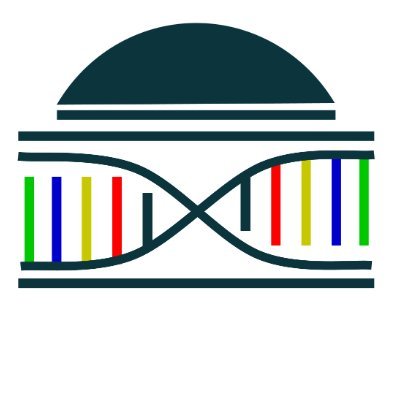
Bonnie Berger Lab
@lab_berger
Followers
2K
Following
16
Media
12
Statuses
129
The Berger lab at @MIT_CSAIL works on a diverse set of problems in computational biology. Account run by lab members. Also @bergerlab.bsky.social.
MIT
Joined September 2020
What can you do when you need to evaluate a set of models but don't have too much labeled data? Solution: add unlabeled data. It was great to co-lead this project with @dmshanmugam and come talk to us at NeurIPS!
New #NeurIPS2025 paper: how should we evaluate machine learning models without a large, labeled dataset? We introduce Semi-Supervised Model Evaluation (SSME), which uses labeled and unlabeled data to estimate performance! We find SSME is far more accurate than standard methods.
1
4
14
We are thrilled to finally publish @rohitsingh and @alexpywu's model of single-cell causality through the lens of a cell-state parallax! Now out in @NatureComms.
What does taking “portrait mode” photos have to do with decoding the genetic risk factors for Schizophrenia? With GrID-Net, now out in @NatureComms, we show that they both benefit from using the parallax effect to reconstruct underlying “depth” from “flat” observations.
1
3
11
0
0
1
8/ Paper: https://t.co/G2TUaVAghn MIT News article: https://t.co/Py9CdEXXmx Github:
github.com
Github repository for the paper: Sparse autoencoders uncover biologically interpretable features in protein language model representations https://www.pnas.org/doi/10.1073/pnas.2506316122 - onkarsg...
1
1
4
7/ We show that SAE & transcoder features are much more interpretable than ESM neurons, for both protein-level & amino acid-level representations. This has the potential to improve safety, trust & explainability of PLMs. As PLMs improve, SAEs could help us learn new biology.
1
0
3
6/ We also use Claude to autointerpret SAE features based on protein names, families, gene names & GO terms. Many features correspond to families (like NAD Kinase, IUNH, PTH) & functions (like methyltransferase activity, olfactory/gustatory perception).
1
0
3
5/ We interpret these SAE features using Gene Ontology (GO) enrichment. Many protein-level SAE features align tightly with GO terms across all levels of the GO hierarchy.
1
0
2
4/ SAEs have a very wide latent dimension with a sparsity constraint. This forces PLM representations to disentangle into biologically interpretable, sparsely activating features without any supervision.
1
0
1
3/ We train sparse autoencoders (SAEs) on protein-level and amino acid-level representations from layers 6-10 of ESM2_t12_35M_UR50D. We also train transcoders (an SAE variant) on protein-level representations.
1
0
1
2/ Protein-level representations from PLMs are used in many downstream tasks. Disentangling their features can enhance interpretability, helping us trust and explain downstream applications.
1
0
1
1/ PLMs like ESM have made big strides in predicting protein structure & function. But they feel like a “black-box.” What biological information do PLM representations contain? Can we disentangle them systematically?
1
0
1
Excited to share our recent work: Sparse autoencoders uncover biologically interpretable features in protein language model representations now in PNAS. Thread below 🧵
4
25
108
Congrats Youn! and team, @lab_berger @HultgrenLab @broadinstitute @mit @GeorgKGerber1 @BrighamWomens @MGBResearchNews @harvardmed @AshleeMEarl
"Longitudinal profiling of low-abundance strains in microbiomes with ChronoStrain" - Kim et al. https://t.co/UXuuXKEodB
0
3
7
A new approach to decipher the links between genomic proximity, chromatin conformation, and gene function. We leverage scGPT to derive better quantitative estimates and hypothesize a synergy between TADs and condensates. Joint w @rohitsingh8080 & @hliang74
Bio foundation models are great design and engg tools. But can they help decode the fundamental principles of life? We harnessed a single-cell FM for decoding the long-debated relationship between genome arch. and gene coregulation. It all started with an idle curiosity. 1/
0
3
9
Note: our lab has also made a Bluesky! Follow here: https://t.co/qz6taL98Vb. For now, lab members will post on both X and bsky.
1
0
3
6/ 👥 Contributors: @VUllanat, Bowen Jing, @samsledzieski, and Bonnie Berger 🔗 Code: https://t.co/GqrXMjkBBK 📄 Preprint:
biorxiv.org
Protein Language Models (PLMs) trained on large databases of protein sequences have proven effective in modeling protein biology across a wide range of applications. However, while PLMs excel at...
0
0
10
5/ Potential applications of MINT Finally, we show how users can use MINT through two case studies: MINT predictions align with 23/24 experimentally validated oncogenic PPIs impacted by cancer mutations. MINT estimates SARS-CoV-2 antibody cross-neutralization with high accuracy.
1
0
6
4/ Antibody and TCR–Epitope–MHC Modeling MINT outperforms IgBert & IgT5 in predicting antibody binding affinity and estimating antibody expression. Finetuning MINT beats TITAN, PISTE and other TCR-specific models on: TCR–Epitope and TCR–Epitope–MHC interaction prediction.
1
0
6
3/ MINT sets new benchmarks! It outperforms existing PLMs in: ✅ Binary PPI classification ✅ Binding affinity prediction ✅ Mutational impact assessment Across yeast, human, & complex PPIs, we see up to 29% gains vs. baselines!
1
0
7







